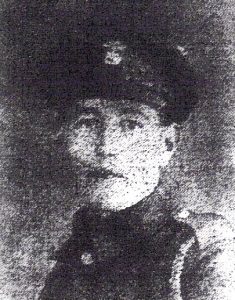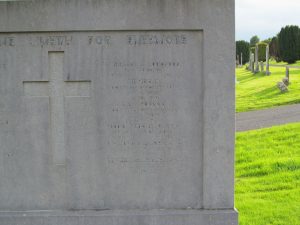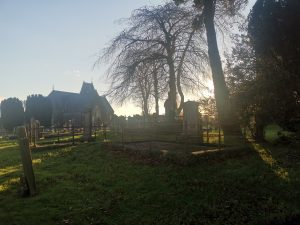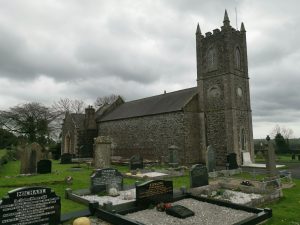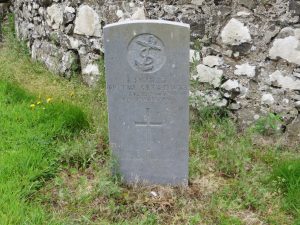Hamilton, W (William)

Hamilton, W (William)
Lance Corporal William Hamilton was the son of Mrs. H. Hamilton, of 19, Upper Violet St., Waterside, Londonderry. He received his Lance Corporal stripe on the 4th of May 1915.
William served with the 10th Inniskilling Fusiliers after joining on the 10th of October 1914. His war began when he originally landed in Boulogne,[1] France on the 6th of October 1915 at 1:30am along with the 10th Inniskilling Fusiliers. There were 1029 men, all ranks.
At 14.00 they went on a route march with a band from Boulogne, arriving at 10.00 the following day at Gare Central Station[2] where they entrained and travelled to Coisy[3] and were billeted. At this point they started training and improving where they slept. Soon though they were on the move again. Training continues, and they were eventually attached to other battalions at Hebuterne[4] to help them gain some experience in trench warfare.
On the 17th of November 1915 William lost his Lance Corporal stripe due to absence. He would remain a Private until the end of his war.
Training continued, and the battalion marched from area to area. When the time came to celebrate the “Closing of the Gates of Londonderry (December 1668)”, the battalion still had no casualties or real front-line experience. This is how their year ended.
1916 began as the previous year ended. It would not be a good year for William Hamilton.
During March 1916, they went to Forceville[5] and the trenches at Thiepval Woods[6] where they relieved the 9th Royal Inniskilling Fusiliers and started receiving their first casualties. This continued into April and up until May when they moved to Léalvillers[7] The battalion remained here until mid-June when they moved back to Forceville and the Thiepval Woods area.
William Hamilton was in hospital for several reasons during this period, initially scabies on the 13th of April 1916, then a wounded finger on the 17th of June 1916. It is not certain if he participated in the Great assault at the Somme.
On the evening of the 30th of June 1916, the battalion moved forward to take up their positions at Thiepval Woods. While walking through Aveluy Woods[8] towards the trenches the 10th Inniskillings commanding officer, Lieutenant Colonel Ross Smyth slipped and sprained his leg and was evacuated. A bad omen of things to come.
With the 9th and 11th Inniskilling Fusiliers on their right and 14th Royal Irish Rifles with them they waited in crowded trenches on the 1st of July for the bombardment of the German lines to finish. The men were all issued a portion of rum as they paused before putting their training into place and entering “No man’s land,” playing their part on the day of the “Great attack.”[9]
The battalions got mixed up as they advanced causing some confusement and even worse advancing to quickly. This caused heavy casualties from friendly fire. Within 100 yards of the enemy’s trench, they lay down awaiting the moment to attack. The company bugle calls soon followed announcing their orders to advance again.
All-in-all 764 men left the trenches, only 346 returned. The battalion eventually left the front line on the 2nd of July to regroup and rest, but only until August when they were redeployed at Ploegsteert Woods.[10]
By the 29th of July, William was back in hospital, this time with scabies and blood poisoning. He returned to the battalion in the middle of August.
Time passed by while the battalion continued to receive casualties and new recruits, raid German trenches, man trenches, bomb, be bombed and repeat. This continued until the end of October when they went to the village of Dranoutre,[11] to rest, bathe and be reissued uniform.
On the 7th of October William fell ill with influenza and finally phthisis on the 14th. He would not return to the battalion again.
1917 was William Hamilton’s last year. He was discharged due to health on the 2nd of March of that year and finally invalided home due to him still suffering from phthisis[12]. His health did not improve, and he unfortunately passed away on the 22nd of April.
William was awarded the 1914/15 Star, the British War and Victory Medals.
Date of Death: 22/04/1917 (Aged 20)
Service: Private, Lance Corporal, 10th Battalion Royal Inniskilling Fusiliers
Service Number: 15575
Burial Location: Claudy New Cemetery in South part.
[1] Boulogne or Boulogne-sur-Mer is a coastal town in north west France.
[2] Gare Central station is around 16 miles south of Boulogne.
[3] Coisy is around 60 miles, southeast of Gare Central Station.
[4] Hebuterne is an area in France around 20 miles northeast of Coisy.
[5] Forceville in an area in France in between Thiepval Woods and Léalvillers.
[6] Thiepval Woods is around 6 miles south of Hebuterne.
[7] Léalvillers is an area in France around 7 miles east of Thiepval.
[8] Woods just west of Thiepval Woods.
[9] Great attack, later called the Battle of the Somme.
[10] Ploegsteert Woods is in southern Belgium about 60 miles north of Thiepval Woods.
[11] Dranoutre is a small village in Belgium around 6 miles west of Ploegsteert Woods.
[12] Phthisis, pulmonary phthisis or tuberculosis (TB) is an infection of the lung, which leads to wasting away of the body.
